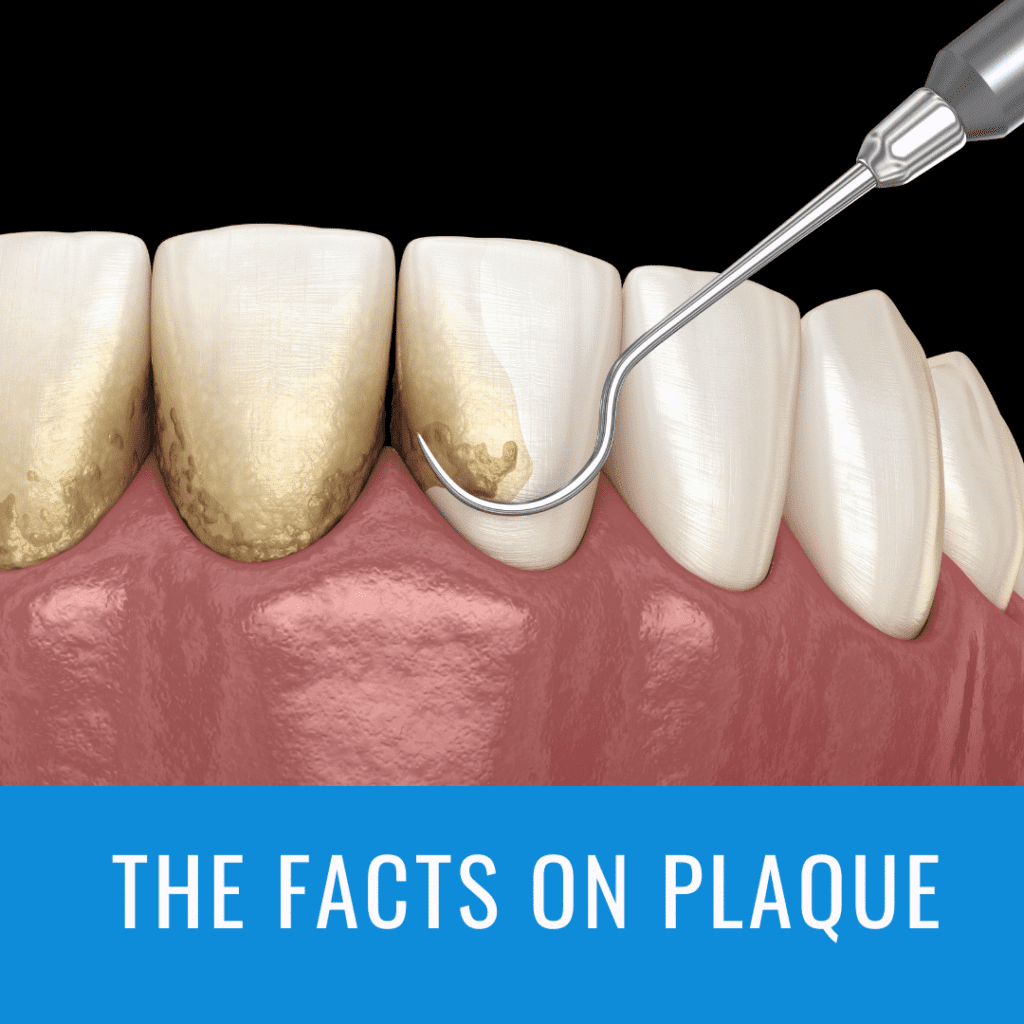Have you ever wondered why you need to go to the dentist or how tooth decay and gum disease develop? The simplest answer is dental plaque. In fact, you may even know that brushing and flossing are important because they remove plaque. While you may know how to remove plaque, have you ever really thought about what plaque is, how it forms, and how it affects your oral health? If not, then you should check out these facts on plaque:
What is plaque?

The basic definition of plaque is the clear, sticky film that coats the entire surface of your teeth. In some cases, plaque may even appear colored when food particles become trapped in the sticky film. At a microscopic level, however, plaque is mainly composed of water and microorganisms. Among all these microorganisms, bacteria is the most prevalent. In fact, if you were to remove all the water from plaque, 70% of plaque’s composition would be bacteria and around 1,000 different types of bacteria have been identified in plaque. Other common names for plaque include: biofilm, oral biofilm, microbial plaque, dental plaque biofilm, or bacterial plaque biofilm.
Where is plaque found?
Plaque can be found on the entire surface of your teeth and there are two main types of plaque that are differentiated by where on the teeth they form. The first type is known as supragingival plaque. Supragingival plaque forms on the visible surface of the tooth above the gums, known as the crown. After brushing or flossing, supragingival plaque is the first type of plaque to form. In cases where supragingival plaque is not removed, then bacteria will continue to grow and eventually spread below the gums. When this happens, then subgingival plaque can form. Subgingival plaque forms below the gum line on the tooth roots.
How does plaque form?
Plaque is primarily composed of water and bacteria, which are both naturally found in the mouth. Bacteria can also be added to the mouth while eating, drinking, or breathing. As more bacteria and food particles build up, then plaque starts to form. It is also important to note that plaque forms on the teeth because they do not shed and are an ideal place for bacteria to thrive. Since teeth don’t shed, bacteria can continue to grow undisturbed. Not only that, but bacteria feed off of sugars found in foods and beverages, meaning that they also have an ideal food source. The pH of the mouth is also beneficial for bacterial growth and plaque formation.
What happens when excess plaque forms?
While the formation of plaque is a natural process, too much dental plaque can be problematic for your oral health. This is because the plaque houses bacteria, so more plaque=more bacteria. Too much bacteria in one area is detrimental to your oral health for a few reasons. First, bacteria feed on sugars and convert them to an acidic waste product. This acidic waste is deposited onto the surface of the tooth, which damages the enamel. As more and more damage is done to the enamel, it will eventually result in the formation of a cavity. Since large amounts of bacteria can also make the saliva pH more acidic, this can also speed up the amount of time it takes for a cavity to form, since the mouth cannot properly clean itself. Another reason excess bacteria and plaque is harmful is because when it accumulates along the gums, it causes gum inflammation. The gums will eventually become infected with gum disease that can lead to future tooth loss if not treated correctly.

How to prevent excess plaque?
As mentioned before, your mouth provides an ideal environment for the growth of bacteria and plaque. Since the teeth don’t shed, this allows bacteria to grow undisturbed. This means that the only way to prevent bacteria from continuing to grow is to remove it with regular brushing and flossing. On average, it takes plaque about 4-12 hours to form after brushing or flossing, which is why it is necessary to brush your teeth twice a day and floss daily. Another important step to preventing excess plaque is to visit your dentist every six months for a professional cleaning and checkup. Professional cleanings will remove plaque from areas you may have missed, while regular checkups can identify potential oral health risks earlier and provide effective treatment.

Dr. Sarmad Channo, a Rochester, MI dentist, received his doctorate degree from New York University Dental School. Since then, he has continued studying to broaden his expertise and has also graduated from Progressive Orthodontic Seminars with the highest of honors. Dr. Channo has also served as an instructor for both the McGann Postgraduate School of Dentistry and Progressive Orthodontic Seminars.

